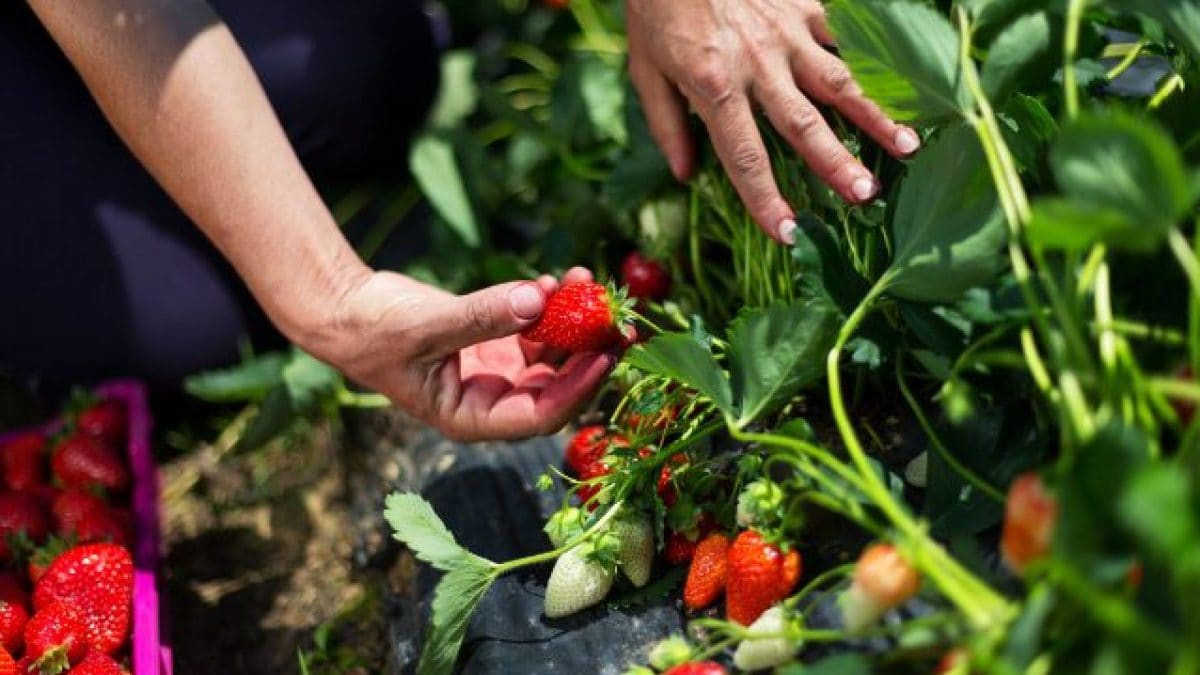
Are you ever disappointed by the strawberries you pick up at the grocery store? They often look big, bright, and juicy, but when you bite into them, they can be watery and lack natural sweetness.
Why not grow your own strawberries this year? It’s easier than you think, doesn’t require a lot of space, and you get the rewarding experience of enjoying fresh fruit you grew yourself. Plus, homegrown strawberries are free from harmful pesticides and don’t have to travel thousands of miles like store-bought ones.
It does take some effort to grow strawberries, but the anticipation of next year’s delicious harvest and the joy of picking your own fresh berries make it worthwhile.
Where to Plant Your Strawberries
Strawberries thrive in warm, sunny spots with well-draining soil. If your garden has heavier clay soil, create a raised bed by mounding soil about a foot high and planting your strawberries on top. If your strawberry plants bloom in early spring (March or April), protect the flowers with frost cloth or garden fleece when frost is expected, since frost-damaged flowers won’t develop into fruit.
Avoid planting strawberries near potatoes, as they can share a soil disease called verticillium wilt that affects both plants. If space is tight, consider growing strawberries in special containers, hanging baskets, or self-watering tower pots that can hold up to 24 plants and handle watering automatically.

Best Strawberry Varieties for Your Garden
Looking for a tasty variety? Chef Raymond Blanc’s favorite strawberry is ‘Marshmello,’ praised for its rich flavor. Early-blooming varieties like ‘Earliglow’ and ‘Honeoye’ do well in cooler American climates.
For something unique, try the ‘Albion’ variety, known for its large, sweet berries and extended harvest season. Another interesting option is the alpine strawberry, like ‘Mignonette,’ which produces small, intensely flavorful berries all season long.
White strawberries, such as the ‘Pineberry,’ are also gaining popularity. They have a creamy blush color and a delicate, pineapple-like flavor, making them a fun twist on traditional red strawberries.
Caring for Your Strawberry Plants
Keep your strawberry bed tidy by removing brown or dead leaves in early spring. Regular weeding is important—do this both before the growing season and after harvest to keep your plants healthy. After you finish picking strawberries in summer, trim the leaves back and remove runners (the long stems that grow from the main plant). You can root these runners in pots to start new plants for next year.
Once the plants start flowering, feed them with a fertilizer high in potassium, specially formulated for strawberries, to encourage juicy fruit.
Birds love strawberries as much as you do, so protect your crop with bird netting unless you’re happy to share!

Why Grow Your Own Strawberries?
Nothing says summer quite like fresh, homegrown strawberries bursting with natural sweetness. Growing your own ensures you get the freshest, tastiest berries possible while enjoying a fun and rewarding gardening experience.
Plus, it’s better for the environment—reducing plastic packaging and transportation emissions associated with store-bought berries. So, roll up your sleeves this spring, grab some plants or seeds, and start your strawberry garden!
;Resize,width=767;)
